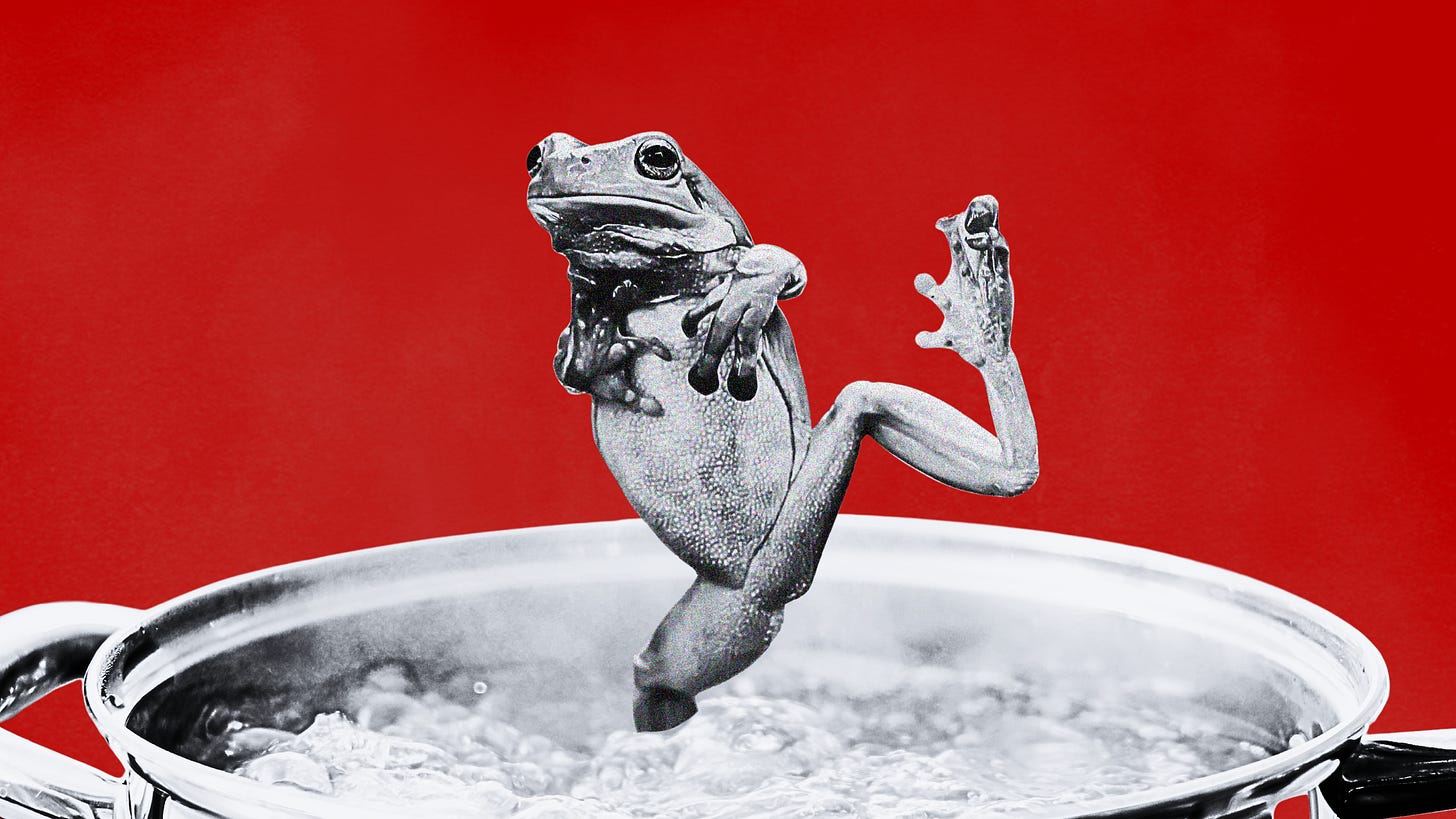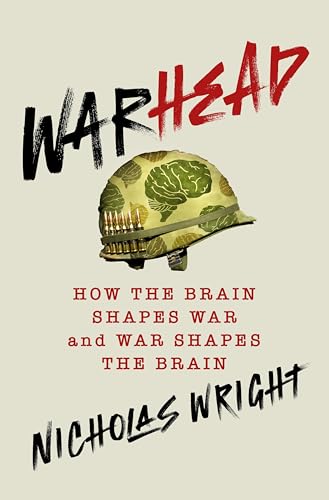When the media act like things are normal, they don’t reassure us – they gaslight us
Nov 10, 2025 (stopthepresses.news)

Imagine if Donald Trump had been a normal politician for a decade and then suddenly demolished the East Wing of the White House.
Or if he were normal for a decade and then posted a video showing a cartoon version of himself using a plane to drop feces on a crowd of Americans.
Or if he were normal for a decade and then pardoned someone who gave his family a huge cryptocurrency payday that looked very much like a bribe – then denied he even knew who the pardon recipient was.
If a president had done any of those things in a normal time, the news media would have gone big with the story. But a very abnormal Trump has done all three of those things in the last month, and the stories have lasted only a day or two in major news coverage.
Trump has been dropping feces on us for a decade… and now we’re used to it.
It would be great if we had an institution enshrined in the Constitution that would alert us when dangerously out-of-bounds things happen. An institution like, maybe, the press.
Instead, the media are easing us into tyranny. Here are some of the ways it’s happening.
News outlets rarely “hit the total button.”
When I was an editor at the Chicago Tribune, we had an expression for when we would step back from day-to-day coverage of an issue and put the whole thing in context. We called it “hitting the total button.” For example, instead of just covering each individual settlement the city of Chicago made for police misconduct, we knew we would tell a more revealing truth by adding them all up and putting the amount in the headline.
This was not an amazing innovation. It was basic journalism. But too often the national media fail to do it in their political coverage. They’ve often done a decent job of reporting Trump’s individual steps toward autocracy, but it’s rare for them to publish a sweeping story that sums it all up.
For months I’ve been calling on the media to write headlines like “Trump is building a dictatorship.” Because he is, and there’s a mountain of evidence to support that conclusion. The failure to do that keeps us sliding toward authoritarianism.
Major media have surrendered to the liars.
When Trump says, “I have my best numbers ever,” the reporters covering him don’t shout in unison, “No, you don’t!” even though they know he’s lying. Trump keeps making conditions more difficult for the media, so they realize there would be repercussions if they challenged him that way. Their bosses want to maintain “access.”
You see a similar acceptance of lies when TV news shows run video of Trump or other con artists like Mike Johnson. Sometimes they let all the lies go unchallenged. Sometimes they pick out one false statement and fact-check it. But many, many lies are delivered straight to the public without any correction.
It’s an indictment of mainstream media that this process keeps getting worse. There’s no learning curve. The operating principle seems to be: MAGA Republicans have lied to us for a decade, but we have to pretend they might be telling the truth this one time.
Meanwhile, the concept of shared facts is steadily eroded, making a functioning democracy impossible.
Everything seems to have the same volume.
When the crisis is constantly getting worse, why do the media cover it with the same monotonous, muffled drumbeat? Are they ever going to set off the fire alarms?
Part of the problem is the formatting of news sites on the web, which tends to make every story appear similar in importance. I do not pine for the days of print newspaper dominance – really – but that format offered a clearer news hierarchy. Websites could solve this problem if they’d break their rigid format more often.
Then there’s National Public Radio. I don’t want to blame NPR for being NPR, but its cool, breezy tone makes it seem as if everything will be alright when, in fact, we’re in deep trouble.
The media don’t need to crank up the volume to 11 for every act of misconduct by the regime. They just need to modulate. They should look for opportunities to break out from their regular coverage and recognize extraordinary developments. For example, a president sending masked, armed thugs to beat up and abduct people in American cities. Or 7 million people protesting Trump on a single day. The recent “No Kings” protests deserved more than two small photos below the New York Times’ Page 1 fold and a story back on Page 23.
The media’s desire to sedate its audience is evidenced by NBC News’ new slogan: “Facts. Clarity. Calm.” This is not the time to be calm. This is the time to be scared enough to defend our democracy.
If we start thinking what’s happening is routine, we’re doomed.
If only the media acted more like frogs.
During this time when so many Americans are complacent about the authoritarian threat, you’ve probably heard the metaphor of the boiled frog. It goes like this: If a frog is dropped into boiling water, it will jump out. But if the frog is placed in water that is slowly brought to a boil, it won’t realize the danger in time and will be cooked to death.
Problem is, that’s not true. At least not for frogs. Experts say when the water got uncomfortably hot, a frog would leap to safety.
But it seems like we’re finding out that the national news media aren’t as smart as frogs.


 THE SHAMPOO
THE SHAMPOO





 … You can say anything you want, yessir, but it’s the words that sing, they soar and descend … I bow to them … I love them, I cling to them, I run them down, I bite into them, I melt them down … I love words so much … The unexpected ones … The ones I wait for greedily or stalk until, suddenly, they drop … Vowels I love … They glitter like colored stones, they leap like silver fish, they are foam, thread, metal, dew … I run after certain words … They are so beautiful that I want to fit them all into my poem … I catch them in mid-flight, as they buzz past, I trap them, clean them, peel them, I set myself in front of the dish, they have a crystalline texture to me, vibrant, ivory, vegetable, oily, like fruit, like algae, like agates, like olives … And then I stir them, I shake them, I drink them, I gulp them down, I mash them, I garnish them, I let them go … I leave them in my poem like stalactites, like slivers of polished wood, like coals, pickings from a shipwreck, gifts from the waves … Everything exists in the word … An idea goes through a complete change because one word shifted its place, or because another settled down like a spoiled little thing inside a phrase that was not expecting her but obeys her … They have shadow, transparence, weight, feathers, hair, and everything they gathered from so much rolling down the river, from so much wandering from country to country, from being roots so long … They are very ancient and very new … They live in the bier, hidden away, and in the budding flower.
… You can say anything you want, yessir, but it’s the words that sing, they soar and descend … I bow to them … I love them, I cling to them, I run them down, I bite into them, I melt them down … I love words so much … The unexpected ones … The ones I wait for greedily or stalk until, suddenly, they drop … Vowels I love … They glitter like colored stones, they leap like silver fish, they are foam, thread, metal, dew … I run after certain words … They are so beautiful that I want to fit them all into my poem … I catch them in mid-flight, as they buzz past, I trap them, clean them, peel them, I set myself in front of the dish, they have a crystalline texture to me, vibrant, ivory, vegetable, oily, like fruit, like algae, like agates, like olives … And then I stir them, I shake them, I drink them, I gulp them down, I mash them, I garnish them, I let them go … I leave them in my poem like stalactites, like slivers of polished wood, like coals, pickings from a shipwreck, gifts from the waves … Everything exists in the word … An idea goes through a complete change because one word shifted its place, or because another settled down like a spoiled little thing inside a phrase that was not expecting her but obeys her … They have shadow, transparence, weight, feathers, hair, and everything they gathered from so much rolling down the river, from so much wandering from country to country, from being roots so long … They are very ancient and very new … They live in the bier, hidden away, and in the budding flower.



















